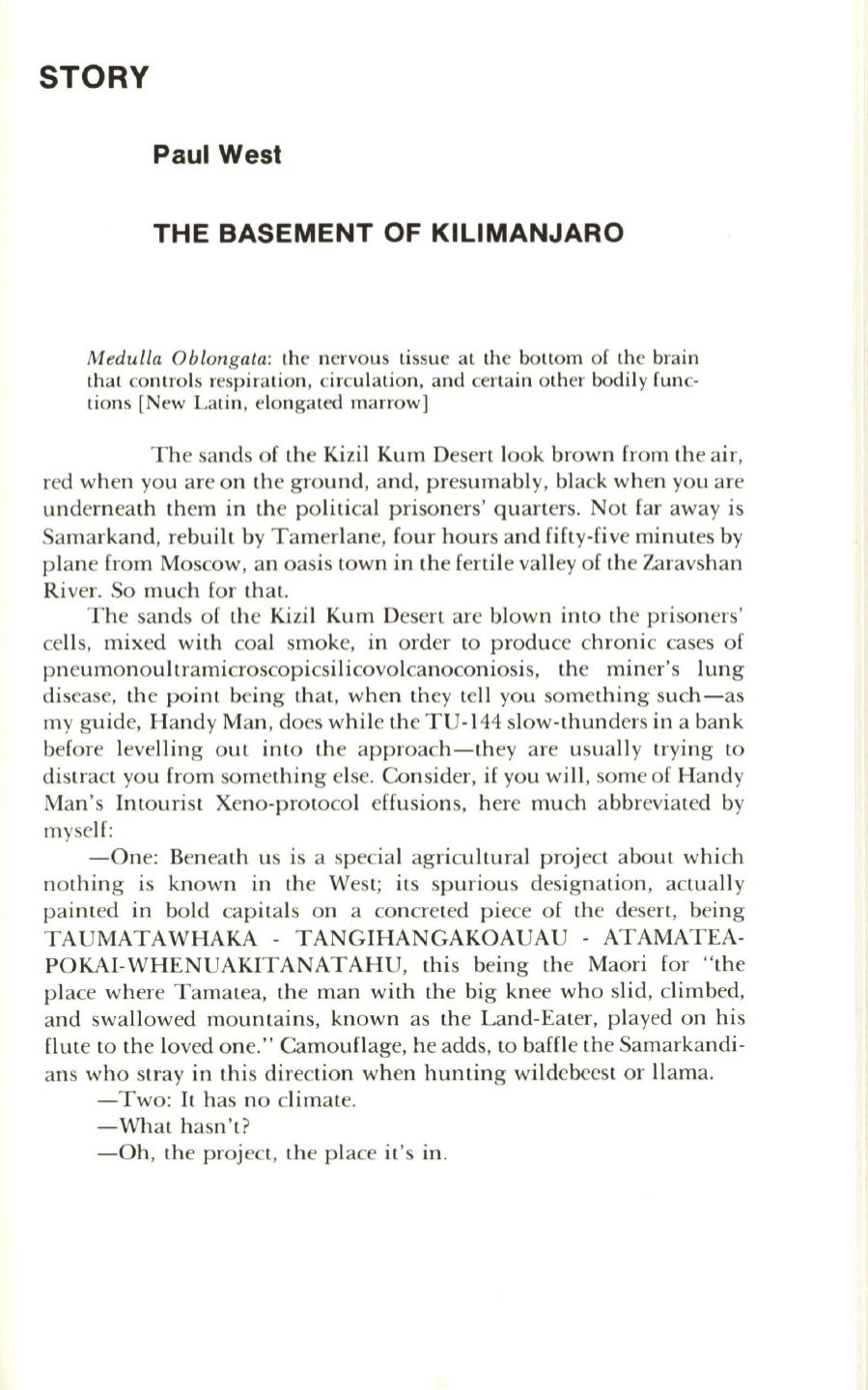
STORY
Paul West
THE BASEMENT OF KILIMANJARO
Medulla Oblongata:
the nervous tissue at the bottom o[ the brain
that controls respiration, circulation, and certain other bodily [unc–
tions [New Latin, elongated marrow
1
The sands of the Kizil Kum Desert look brown from the air,
red when you are on the ground, and, presumably, black when you are
underneath them in the political prisoners' quarters. Not far away is
Samarkand, rebuilt by Tamerlane, four hours and fifty-five minutes by
plane from Moscow, an oasis town in the fertile valley of the Zaravshan
River. So much for that.
The sands of the Kizil Kum Desert are blown into the prisoners'
cells, mixed with coal smoke, in order to produce chronic cases of
pneumonoultramicroscopicsilicovolcanoconiosis, the miner's lung
disease, the point being that, when they tell you something such - as
my guide, Handy Man, does while the TU-144 slow-thunders in a bank
before levelling out into the approach-they are usually trying to
distract you from something else. Consider, if you will, some of Handy
Man's Intourist Xeno-protocol effusions, here much abbreviated by
myself:
-One: Beneath us is a special agricultural project about which
nothing is known in the West; its spurious designation, actually
painted in bold capitals on a concreted piece of the desert, being
TAUMATAWHAKA - TANGIHANGAKOAUAU - ATAMATEA–
POKAI-WHENUAKITANATAHU, this being the Maori for "the
place where Tamatea, the man with the big knee who slid, climbed,
and swallowed mountains, known as the Land-Eater, played on his
flute to the loved one." Camouflage, he adds,
to
baffle the Samarkandi–
ans who stray in this direction when hunting wildebeest or llama.
-Two:
It
has no climate.
-What hasn't?
-Oh, the project, the place it's in.


